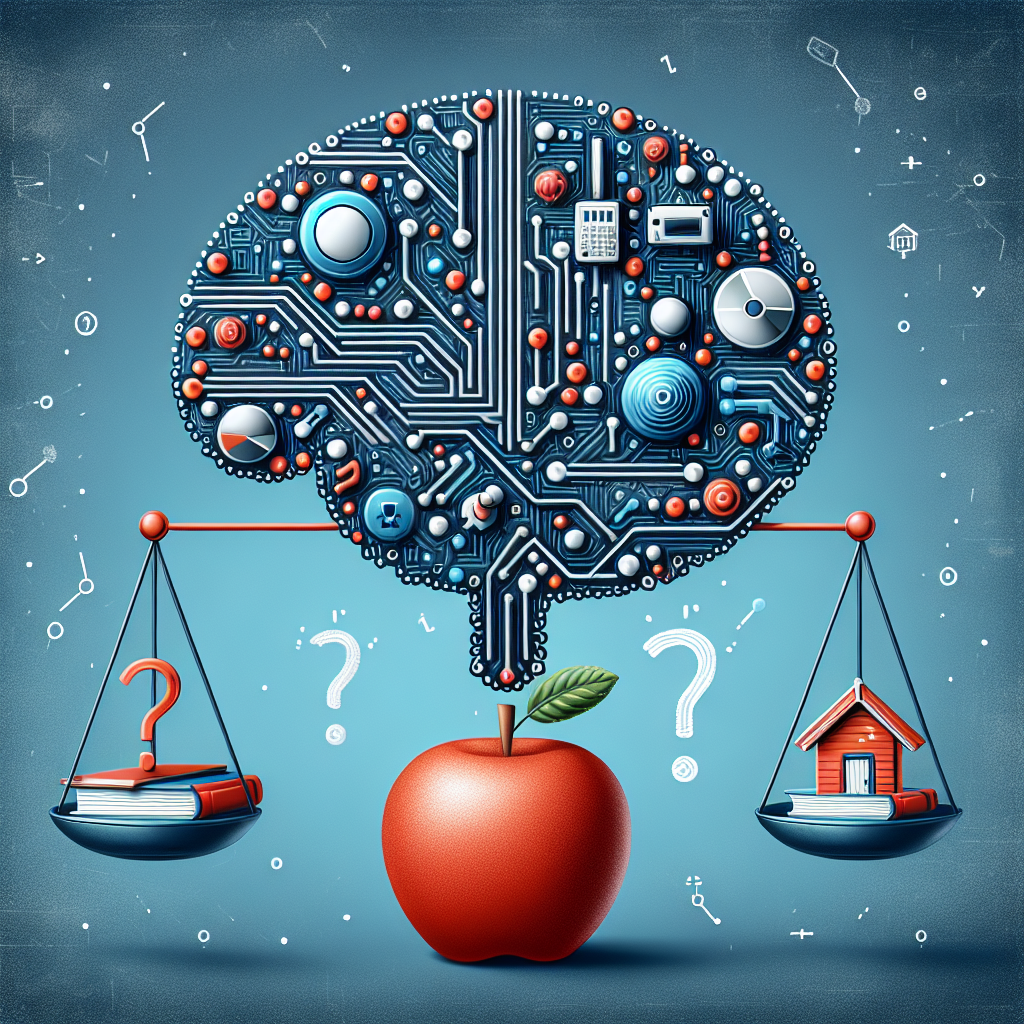AI-Powered Grading Systems: A Teacher’s Dream?
Artificial Intelligence (AI) has made significant strides in various fields, including education. One area where AI has shown promise is in grading systems. AI-powered grading systems have the potential to revolutionize the way teachers assess student work, providing quicker and more accurate feedback. But are these systems really a teacher’s dream, or do they come with their own set of challenges and limitations? In this article, we will explore the benefits and drawbacks of AI-powered grading systems and how they can impact the teaching and learning process.
Benefits of AI-Powered Grading Systems
1. Time-saving: One of the most significant advantages of AI-powered grading systems is the time they save teachers. Grading a large number of assignments can be a time-consuming task, especially when teachers have to provide detailed feedback on each one. AI-powered systems can automate the grading process, allowing teachers to focus on more meaningful tasks like lesson planning and student engagement.
2. Consistent and unbiased grading: AI-powered grading systems can provide consistent and unbiased feedback to students. Unlike human graders, AI algorithms do not have personal biases or emotions that can influence their assessment of student work. This can help ensure that all students are graded fairly and receive feedback based on their actual performance.
3. Immediate feedback: AI-powered grading systems can provide immediate feedback to students, allowing them to see where they went wrong and how they can improve. This real-time feedback can help students learn from their mistakes and make corrections before moving on to the next assignment.
4. Personalized learning: AI-powered grading systems can analyze student performance data and provide personalized learning recommendations based on their strengths and weaknesses. This can help teachers tailor their instruction to meet the individual needs of each student, leading to better learning outcomes.
5. Scalability: AI-powered grading systems can scale to accommodate a large number of students and assignments. This is especially useful in online learning environments where teachers may have hundreds or even thousands of students to assess. AI can handle this volume of grading quickly and efficiently, ensuring that students receive timely feedback on their work.
Challenges and Limitations of AI-Powered Grading Systems
1. Lack of human touch: One of the main criticisms of AI-powered grading systems is the lack of human touch in the feedback provided to students. While AI algorithms can assess student work objectively, they may not be able to provide the nuanced feedback and guidance that a human teacher can offer. Students may miss out on the personal connection and mentorship that comes with human grading.
2. Limited in assessing creativity and critical thinking: AI-powered grading systems are generally good at evaluating objective criteria like grammar, spelling, and calculations. However, they may struggle to assess more subjective aspects of student work, such as creativity, critical thinking, and originality. These skills are essential for students’ success in the real world but may be overlooked by AI algorithms.
3. Technical limitations: AI-powered grading systems rely on algorithms and machine learning models to assess student work. These systems may not always be accurate or reliable, especially when faced with complex or non-standard assignments. Teachers may need to spend additional time reviewing and verifying the AI-generated grades to ensure their accuracy.
4. Privacy concerns: AI-powered grading systems collect and analyze a large amount of student data to provide personalized feedback. This raises concerns about student privacy and data security. Teachers and school administrators must ensure that student data is protected and used ethically in accordance with privacy regulations.
5. Cost and implementation challenges: Implementing AI-powered grading systems can be costly and time-consuming for schools and educational institutions. They may need to invest in new technology, training for teachers, and ongoing support to ensure the systems are effective and sustainable. Not all schools may have the resources or expertise to adopt AI-powered grading systems successfully.
FAQs
Q: Can AI-powered grading systems completely replace human teachers?
A: No, AI-powered grading systems cannot replace human teachers entirely. While they can automate certain aspects of the grading process, human teachers play a crucial role in providing personalized feedback, mentorship, and support to students.
Q: How can teachers ensure the accuracy of AI-generated grades?
A: Teachers can verify the accuracy of AI-generated grades by reviewing the feedback provided by the system, comparing it to their own assessment, and making any necessary adjustments. It is essential to use AI-powered grading systems as a tool to assist teachers in their grading process, rather than relying solely on AI-generated grades.
Q: Are AI-powered grading systems suitable for all types of assignments?
A: AI-powered grading systems are best suited for assignments that have clear and objective criteria, such as multiple-choice questions, quizzes, and standardized tests. They may struggle with assessing more subjective assignments that require creativity, critical thinking, and originality.
Q: How can teachers support students in using AI-powered grading systems?
A: Teachers can support students in using AI-powered grading systems by providing guidance on how to interpret and act on the feedback provided by the system. They can help students understand their strengths and weaknesses, set goals for improvement, and track their progress over time.
In conclusion, AI-powered grading systems offer several benefits to teachers and students, including time-saving, consistent feedback, immediate feedback, personalized learning, and scalability. However, they also come with challenges and limitations, such as the lack of human touch, limited assessment of creativity and critical thinking, technical limitations, privacy concerns, and cost and implementation challenges. It is essential for teachers and educational institutions to carefully consider these factors when adopting AI-powered grading systems and to use them as a tool to enhance, rather than replace, the teaching and learning process.

